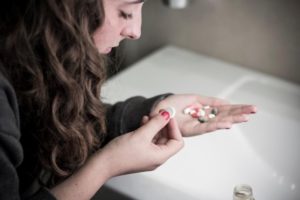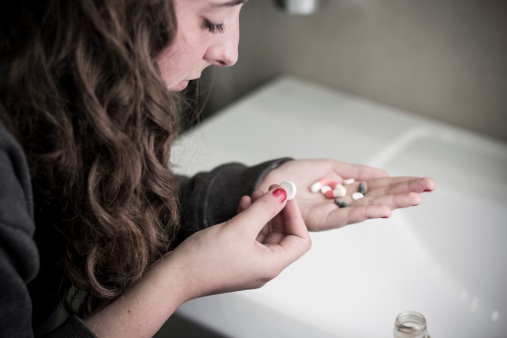Published on November 25, 2014 By Marcus Chavers Health Lifestyle News Most prescription drug abuse studies center around the widespread use of stimulants to get ahead in school. You hear drug names such as Adderall being thrown about with increasing regularity. A new study, in the journal Psychology and Addictive Behaviors, is shining the light on another problem. Abuse of anti-anxiety and sleep medications. The keyword is abuse. At issue will be knee jerk reactions that the anti-anxiety pills are inherently dangerous. That’s not the case. Problems arise out of people misusing, taking more than prescribed or mixing substances. In a news release, lead researcher Carol J. Boyd at the University of Michigan School of Nursing summed up the problem. “This is a wake-up call to the medical community as far as the risks involved in prescribing these medications to young people. When taken as prescribed, these drugs are effective and not dangerous. The problem is when adolescents use too many of them or mix them with other substances, especially alcohol.” Over the past decade, the number of prescriptions have jumped among teenagers. The medication class, that includes drugs like Xanax, Klonopin or Valium, have serious side effects. Common side effects range from impairing driving to sleepiness all the way to serious, fatal consequences. Patients will sometimes start mixing the substances, and the percentage of overdoses, substance abuse disorders and criminal behavior jumps. A common misconception is that drug dealers and doctor shopping is at the heart of obtaining prescription drugs. Actually, it is often a person gets prescribed the medication, and then hands it over to friends or family. In the study, three percent of the 2700 middle and high school students reported receiving a prescription for these classes of drugs. Out of that three percent, the student was ten times more likely to illegally acquire the drug over a student that had not received a prescription. “Prescribers and parents don’t realize the abuse potential,” Boyd said. “These drugs produce highly attractive sensations, and adolescents may start seeking the drugs after their prescriptions run out.” One remedy that makes it way to the top is severely limiting prescriptions. On the surface, it sounds like a great idea. You just have to look at the heroin epidemic to see what unintended consequences truly looks like. Opioid pain medication went through the same studies, and prescriptions were heavily limited. The patients turned to heroin as a cheaper, more dangerous alternative. I’m all for reforming the ways drugs are prescribed. But to arbitrarily start limiting substances that you have to be tapered off of is a mistake. It creates the very illegal activity the study outlines. Patients gaining access to illicit drugs – prescription or street. Doctors should be making the recommendations on how best to deal with the situation, not regulators. The data points regulators at the FDA considers and makes policy on are probably your neighbor’s kid or your own. It doesn’t take a leap to know we should treat the person, not the Excel document.
Most prescription drug abuse studies center around the widespread use of stimulants to get ahead in school. You hear drug names such as Adderall being thrown about with increasing regularity. A new study, in the journal Psychology and Addictive Behaviors, is shining the light on another problem. Abuse of anti-anxiety and sleep medications. The keyword is abuse. At issue will be knee jerk reactions that the anti-anxiety pills are inherently dangerous. That’s not the case. Problems arise out of people misusing, taking more than prescribed or mixing substances. In a news release, lead researcher Carol J. Boyd at the University of Michigan School of Nursing summed up the problem. “This is a wake-up call to the medical community as far as the risks involved in prescribing these medications to young people. When taken as prescribed, these drugs are effective and not dangerous. The problem is when adolescents use too many of them or mix them with other substances, especially alcohol.” Over the past decade, the number of prescriptions have jumped among teenagers. The medication class, that includes drugs like Xanax, Klonopin or Valium, have serious side effects. Common side effects range from impairing driving to sleepiness all the way to serious, fatal consequences. Patients will sometimes start mixing the substances, and the percentage of overdoses, substance abuse disorders and criminal behavior jumps. A common misconception is that drug dealers and doctor shopping is at the heart of obtaining prescription drugs. Actually, it is often a person gets prescribed the medication, and then hands it over to friends or family. In the study, three percent of the 2700 middle and high school students reported receiving a prescription for these classes of drugs. Out of that three percent, the student was ten times more likely to illegally acquire the drug over a student that had not received a prescription. “Prescribers and parents don’t realize the abuse potential,” Boyd said. “These drugs produce highly attractive sensations, and adolescents may start seeking the drugs after their prescriptions run out.” One remedy that makes it way to the top is severely limiting prescriptions. On the surface, it sounds like a great idea. You just have to look at the heroin epidemic to see what unintended consequences truly looks like. Opioid pain medication went through the same studies, and prescriptions were heavily limited. The patients turned to heroin as a cheaper, more dangerous alternative. I’m all for reforming the ways drugs are prescribed. But to arbitrarily start limiting substances that you have to be tapered off of is a mistake. It creates the very illegal activity the study outlines. Patients gaining access to illicit drugs – prescription or street. Doctors should be making the recommendations on how best to deal with the situation, not regulators. The data points regulators at the FDA considers and makes policy on are probably your neighbor’s kid or your own. It doesn’t take a leap to know we should treat the person, not the Excel document.
Anxiety Drug Addiction Among Teenagers Grows




